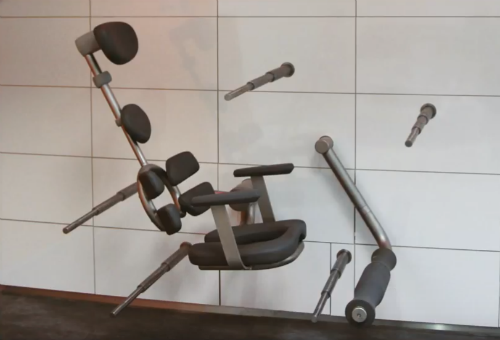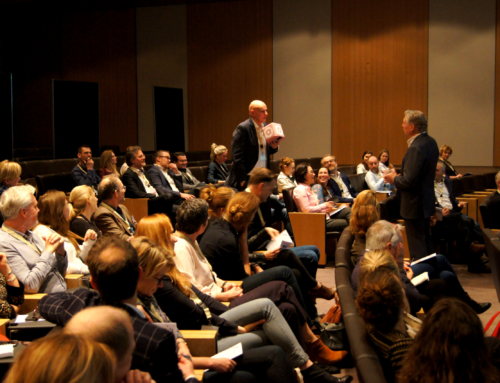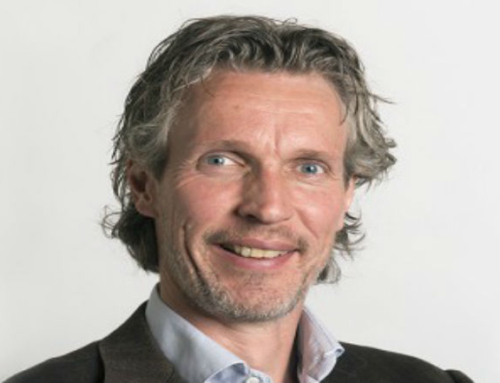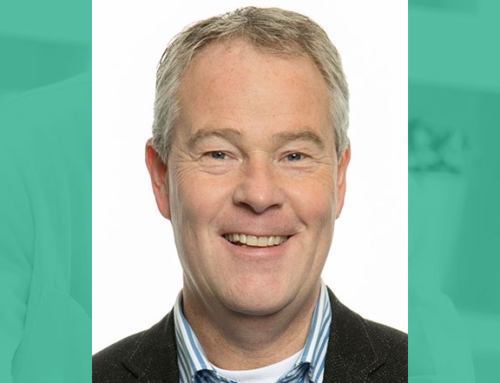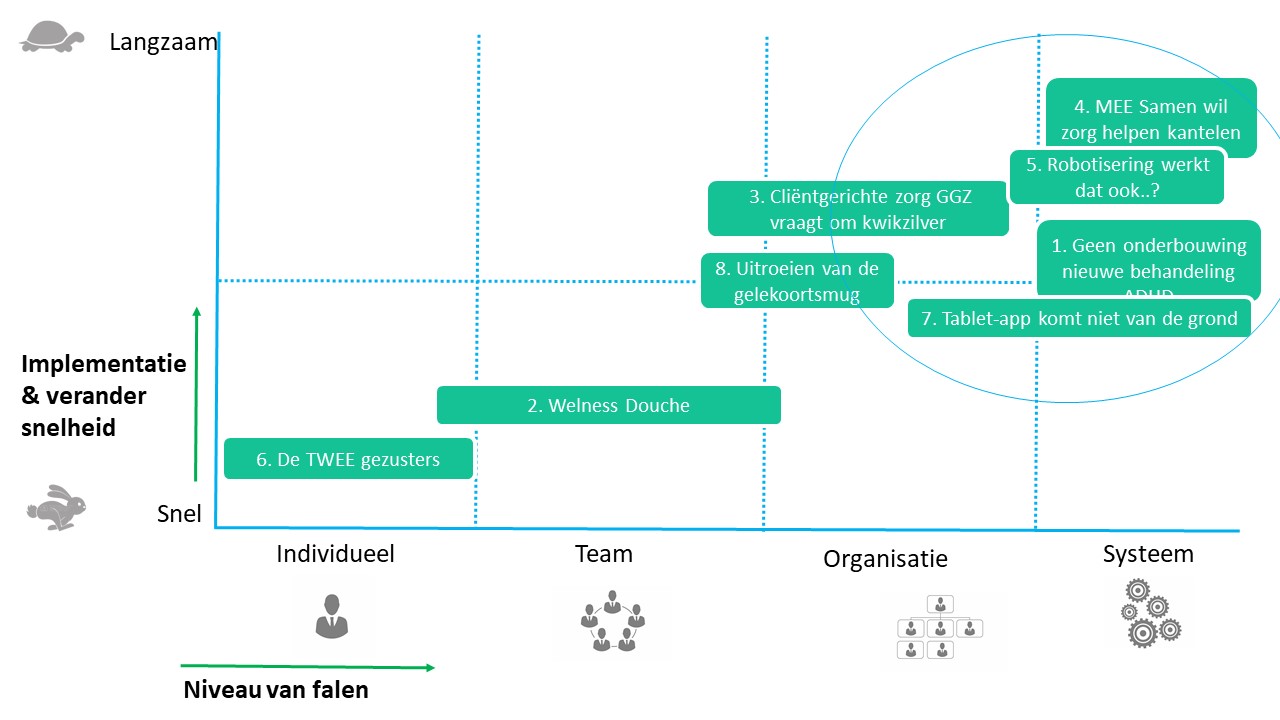
Lessons can be learned from this year's cases, of course, on the basis of the aforementioned archetypes (universal lessons) but also on the basis of the so-called 'failure level'. Brilliant failures can have their origin in system failures, organization-, team- and individual level. A Brilliant Failure can be the result of failure on one of four levels, as of failure on a combination of several levels. In the matrix, the dominating failure level per case is combined with the expected speed with which lessons learned can be put into practice and a change can actually be expected.. You see that in most cases the failure on system- and organizational level dominates and the implementation speed of the lessons will require a relatively long time.
This is how you see in the case “No substantiation for new ADHD treatment” that the system makes it difficult to get negative research results published. The fear of fewer citations of a paper with zero findings continues to create a high barrier to sharing lessons about negative research results. A bright spot is that various initiatives have arisen to turn the tide. For example, under the influence of the #OPENSCIENCE movement, more and more scientific journals and institutes are demanding that scientists use their raw data, materials, put used code and procedures online. What could also help is to make hypotheses and methods leading. If these are well substantiated and the research has been properly conducted (according to applicable scientific standards) then the result is relevant, regardless of the outcome. In addition, adjustment of the Hirsch Index, the citation impact index can facilitate the process of sharing negative findings. Partly in view of these positive developments, the expected implementation speed has been placed halfway along the speed axis.
On the other side of the matrix, on the other hand, you see that in the case. Social Enterprise The two sisters” especially at an individual level can be learned. This social enterprise with positive outcomes in terms of social impact (reintegration process and self-reliance of the elderly) has stopped due to financing problems due to non-compliance with oral agreements of stakeholders. The case submitter comes from the real estate world, verbal agreements are the rule there, but that's in the care- and welfare sector a different story. In retrospect, the lesson on an individual level may seem like an open door (oral promises are not enough) but in the day-to-day delusions, this type of failure happens to many of us; in a new context you still assume learned behavior that does not fit there. The implementation speed of this lesson is relatively short!
For all our analyses, download it Dutch Magazine for Brilliant Failures
BRILLIANT FAILURES
Who finances lifestyle in cardiac rehabilitation?
Beware of the chicken-egg problem. When parties are excited, but first ask for proof, check carefully whether you have the means to provide that burden of proof. And projects aimed at prevention are always difficult, [...]
Wellness shower – after rain shower comes sunshine?
Intention Designing an independent fully automatic and relaxed shower chair for people with a physical and/or mental disability, so that they can shower alone and above all independently instead of 'mandatory' together with the healthcare professional. [...]
Nomination Brilliant Failures Award Healthcare 2022: MindAffect’s Turnaround
Theo Breuers developed a system based on facial recognition that warns when a resident enters or leaves certain areas. The project failed due to privacy legislation.



